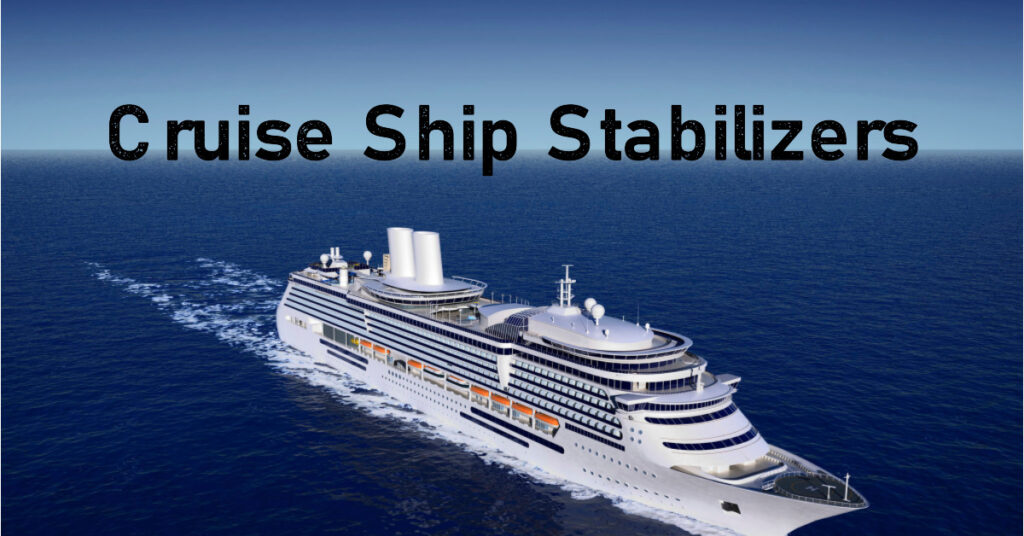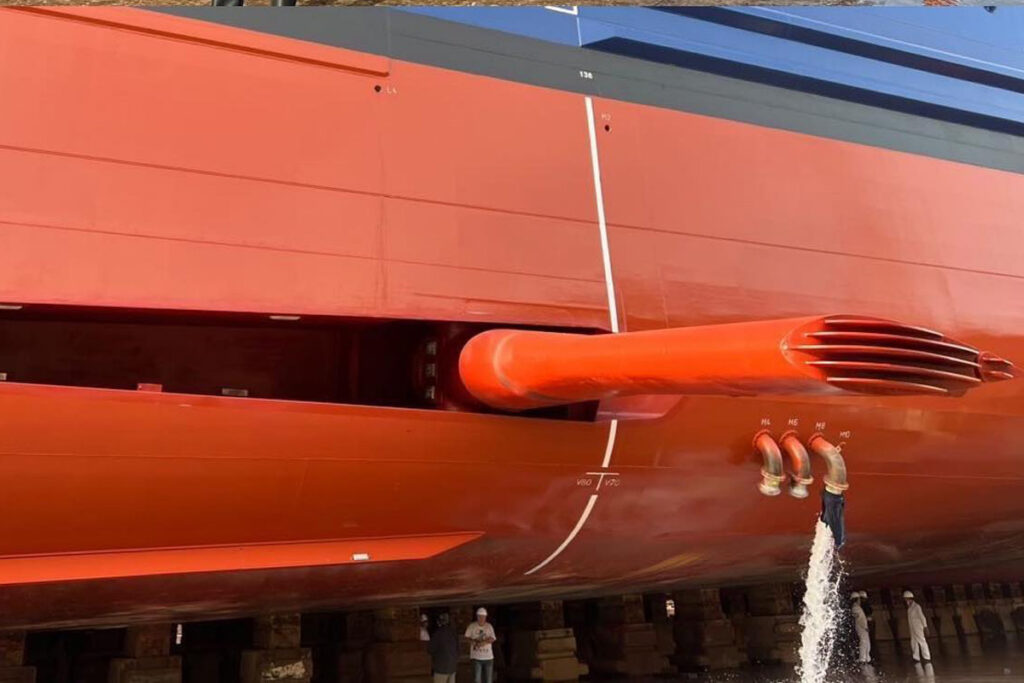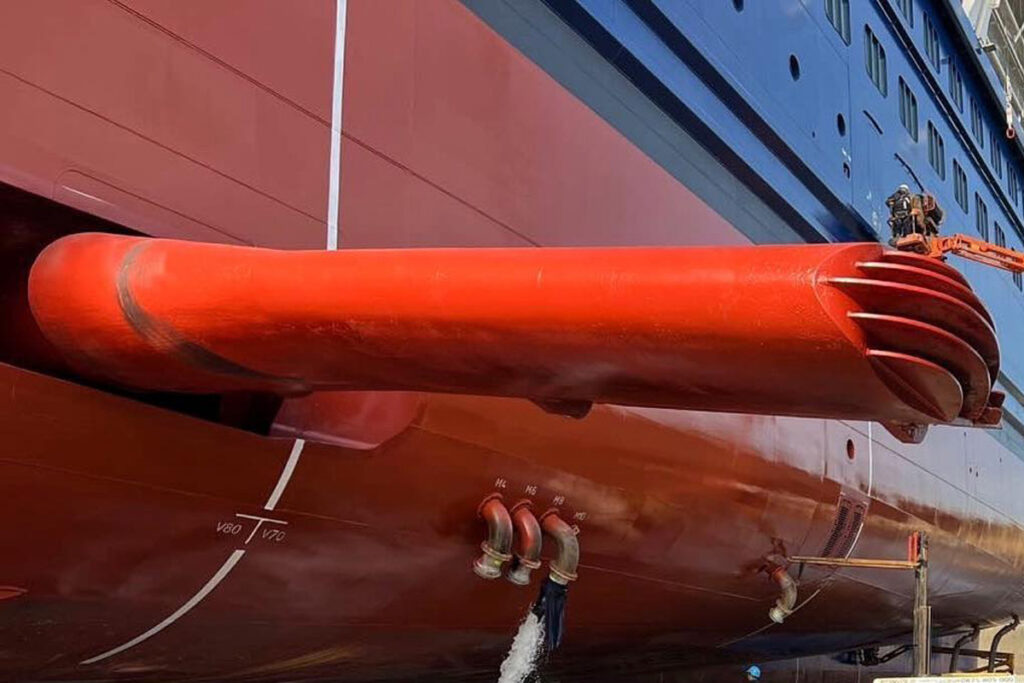Cruise ships are known for their luxurious amenities, fine dining, and exciting entertainment options. However, what many passengers may not realize is that these massive vessels are also equipped with advanced technology to ensure a smooth and stable sailing experience.
This technology comes in the form of cruise ship stabilizers, which are essential for maintaining balance and reducing the effects of rough seas.
Stabilizers are located beneath the water line and extend from the hull of the ship. They are designed to counteract the natural rolling motion of the ocean, which can cause discomfort and even seasickness for passengers. By reducing the amount of rolling, stabilizers can also improve fuel efficiency and safety on board the ship.

While stabilizers are now a standard feature on modern cruise ships, they were not always used in the past. The first stabilizers were introduced in the 1930s, and they have since undergone significant advancements in design and technology. Today, most cruise ships have at least two stabilizers, one on each side of the ship, while larger ships may have up to four.
What are Cruise Ship Stabilizers?
Cruise ship stabilizers are essential components of modern cruise ships that help to reduce the rolling and pitching of the vessel caused by waves, wind, and other external forces. These stabilizers are designed to ensure a smooth and comfortable ride for passengers and crew, as well as to improve the safety and fuel efficiency of the ship.

Types of Stabilizers
There are two main types of cruise ship stabilizers: passive and active. Passive stabilizers are fixed fins or bilge keels that are attached to the hull of the ship and help to reduce rolling motion by creating drag and lift. Active stabilizers, on the other hand, are movable fins or tanks that can be adjusted to counteract the rolling motion of the ship.
How do Stabilizers Work?
Active stabilizers work by using a control system that senses the rolling motion of the ship and adjusts the position of the fins or tanks to counteract it. This control system can be hydraulic, pneumatic, or electric, depending on the design of the stabilizer. Passive stabilizers work by creating drag and lift that counteracts the rolling motion of the ship.
Benefits of Stabilizers
The main benefits of cruise ship stabilizers include increased comfort for passengers and crew, improved safety, and better fuel efficiency. By reducing the rolling and pitching of the ship, stabilizers can help to prevent seasickness, reduce the risk of injury, and improve the stability of the vessel. They also help to reduce fuel consumption by minimizing drag and improving the overall performance of the ship.
Passive vs Active Stabilizers
Passive stabilizers are simpler and less expensive than active stabilizers, but they are less effective in reducing rolling motion in rough sea conditions. Active stabilizers are more complex and expensive, but they offer better performance and can be adjusted to suit different sea conditions.

Stabilizers and Cruise Ship Design
Stabilizers are an important consideration in the design of modern cruise ships. Engineers must take into account the weight, size, and position of the stabilizers, as well as the type of control system and the overall stability of the vessel.
Stabilizers and Roll Reduction
Stabilizers are most effective in reducing roll motion, which is the side-to-side motion of the ship. Active stabilizers are particularly effective in reducing roll motion, as they can be adjusted to suit different sea conditions.
Stabilizers and Pitch Reduction
Stabilizers are less effective in reducing pitch motion, which is the up-and-down motion of the ship. Passive stabilizers can help to reduce pitch motion to some extent, but active stabilizers are not as effective in this regard.
Stabilizers and Bilge Keels
Bilge keels are another type of passive stabilizer that can help to reduce rolling motion by creating drag and lift. They are typically used in combination with fixed fins or active stabilizers to improve the overall stability of the ship.
Stabilizers and Gyroscopes
Gyroscopes are sometimes used in combination with stabilizers to improve their performance. Gyroscopes are devices that use the principle of angular momentum to maintain their orientation in space. They can help to reduce the lag time between the rolling motion of the ship and the adjustment of the stabilizer.
Stabilizers and Active Systems
Active stabilizers are more complex than passive stabilizers and require a control system to adjust their position. This control system can be hydraulic, pneumatic, or electric, depending on the design of the stabilizer.
Stabilizers and Passive Systems
Passive stabilizers are simpler than active stabilizers and do not require a control system. They are typically fixed fins or bilge keels that create drag and lift to counteract the rolling motion of the ship.
Stabilizers and Safety
Stabilizers play an important role in improving the safety of cruise ships. By reducing the rolling and pitching of the vessel, stabilizers can help to prevent seasickness, reduce the risk of injury, and improve the stability of the ship in rough sea conditions.
Stabilizers and Royal Caribbean Ships
Royal Caribbean is one of the largest cruise lines in the world, operating a fleet of 27 ships as of 2023. All of their ships are equipped with stabilizers, which are essential for ensuring a smooth and comfortable ride for passengers.
According to Royal Caribbean Blog, “with innovative design and engineering, ships can also safely navigate around inclement weather, and use stabilizers—fins built off a ship’s port and starboard sides along the water line—to reduce side-to-side motion caused by waves.”
Most of Royal Caribbean’s ships have two stabilizers, one on each side of the ship. However, their larger ships, like the Voyager, Freedom, and Oasis class ships, have four stabilizers, two on each side, as noted by Beyondships2.
Stabilizers work by counteracting the natural rolling motion of the ship caused by waves. As Cruise Hive explains, “Stabilizers are fins or rotors beneath the waterline, extended from the ship’s hull to stabilize the ship and prevent it from rolling.”
Overall, the presence of stabilizers on Royal Caribbean’s ships helps to ensure that passengers have a comfortable and enjoyable cruising experience, even in rough seas.
Stabilizers and Carnival Ships
Carnival Cruise Lines is one of the largest cruise lines in the world, with a fleet of more than 20 ships. All of the ships in the Carnival fleet are equipped with stabilizers to help reduce the amount of rolling and pitching that passengers experience while at sea.
Stabilizers are an essential component of any modern cruise ship. They work by extending fins or rotors beneath the waterline, which help to stabilize the ship and prevent it from rolling excessively from side to side. This helps to reduce the amount of motion that passengers feel while on board, making for a more comfortable and enjoyable cruise experience.
While all Carnival ships are equipped with stabilizers, the exact type and configuration of the stabilizers can vary from ship to ship. Some ships may have bilge keels, which are a type of stabilizer that consists of a bulb plate fitted externally and welded on a flat bar located at the turn of the bilge. Other ships may have more advanced stabilizer systems, such as active fin stabilizers or gyroscopic stabilizers.
Regardless of the specific type of stabilizer system used, the goal is always the same: to provide a smoother, more comfortable ride for passengers. Carnival Cruise Lines takes passenger comfort very seriously, and the use of stabilizers is just one of the ways that the company works to ensure that passengers have a great time on board.
- Types of Gas Carriers as per IGC Code – April 22, 2025
- Wind-Assisted Propulsion Systems (WAPS): A Game Changer for Maritime Decarbonization – February 6, 2025
- 10 Boat Salvage Yards in California – January 25, 2025



